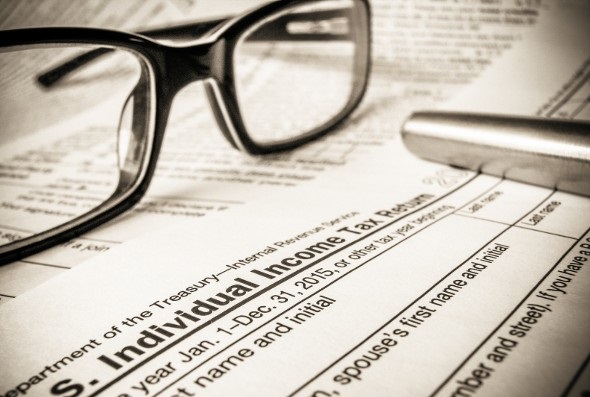

Given the complicated nature of income taxes and the popularity of convenient but not foolproof DIY tax filing software, it’s understandable that you may make a mistake on your taxes at some point. When this happens, you’ll need to file an amended tax return by filling out Form 1040-X. This may be needed if you’ve made mistakes ranging from under-reporting your income to missing out on tax credits and deductions. For help with fixing tax return issues or any other major financial consideration, think about finding a financial advisor to help you.
A financial advisor may be able to help. Match with an advisor serving your area today.
There are two main reasons a person might want to amend a tax return. The first is if he or she underreported income. The second is if he or she didn’t claim all the relevant deductions and credits. In the first scenario, amending the tax return increases tax liability. In the second scenario, filing an amended return will decrease tax liability or increase the size of the tax refund.
If you made a mistake in more than one tax year, you’ll need to file an amended tax return for each year. If you find out that you owe the IRS more than your original tax return would suggest, make sure you pay what you owe promptly, or you could face IRS penalties and interest charges.

If you’re wondering how to amend a tax return, you won’t have to completely redo your tax returns. If you initially filed your federal income taxes using Form 1040, 1040A, 1040EZ, 1040EZ-T, 1040NR or 1040NR-EZ you’re in luck. IRS Form 1040-X, Amended U.S. Individual Income Tax Return, will be your go-to for correcting errors on your tax returns.
Much of the information you include on Form 1040-X will overlap with what you included on your original 1040. Of course, you’ll need to correct the errors that led you to amend your tax return in the first place. You’ll also need to provide supporting documentation. Reporting income from a source you forgot to include on your original returns? Provide the W-2 form for that income. Adding a new deduction such as a charitable donation? Attach the receipt providing proof that you donated.
Pretty simple, right? While you previously couldn’t e-file Form 1040-X, the IRS announced in 2020 that it now permits taxpayers to submit the form electronically with commercial tax-filing software. However, you’ll have to print and mail it, if you prefer. The address you send your amended tax return will depend on the particulars of your filing situation. If you’re using tax preparation software (like TurboTax or H&R Block) you’ll be walked through this process.
You don’t have the rest of your life to file amended tax returns. If you don’t file an amended return within three years of filing the original return (or within two years after paying the taxes based on the original return), you’ll miss your chance to get a refund. The more you owe the IRS or the more the IRS owes you, the more careful you should be to avoid missing that deadline.
Expect to wait up to a few months to see the results of your amended tax return. The IRS is already swamped with the regular volume of tax returns it gets. Add in amended returns and you’re looking at a bit of a wait. The good news is that the IRS makes it easy to check the status of your amended refund on its website beginning three weeks after you send the amended return.

If you discover an error on your tax returns, don’t panic. Filing an amended tax return isn’t the end of the world. Still, you don’t want to make a habit of it. Better to start preparing for tax season well in advance of the deadline. The more complicated your finances, the earlier you should start gathering the documentation you’ll need to file complete and accurate tax returns.
Photo credit: © iStock/Christine Glade, © iStock/laflor, © iStock/mrdoomits
Amelia JosephsonAmelia Josephson is a writer passionate about covering financial literacy topics. Her areas of expertise include retirement and home buying. Amelia's work has appeared across the web, including on AOL, CBS News and The Simple Dollar. She holds degrees from Columbia and Oxford. Originally from Alaska, Amelia now calls Brooklyn home.
Read More About Taxes
 A taxpayer trying to sort out a costly tax mistake." />
A taxpayer trying to sort out a costly tax mistake." />
 Form 8606 for investments made into an IRA account." />
Form 8606 for investments made into an IRA account." />

More from SmartAsset
SmartAsset Advisors, LLC ("SmartAsset"), a wholly owned subsidiary of Financial Insight Technology, is registered with the U.S. Securities and Exchange Commission as an investment adviser. SmartAsset's services are limited to referring users to third party advisers registered or chartered as fiduciaries ("Adviser(s)") with a regulatory body in the United States that have elected to participate in our matching platform based on information gathered from users through our online questionnaire. SmartAsset receives compensation from Advisers for our services. SmartAsset does not review the ongoing performance of any Adviser, participate in the management of any user's account by an Adviser or provide advice regarding specific investments.
We do not manage client funds or hold custody of assets, we help users connect with relevant financial advisors.
This is not an offer to buy or sell any security or interest. All investing involves risk, including loss of principal. Working with an adviser may come with potential downsides such as payment of fees (which will reduce returns). There are no guarantees that working with an adviser will yield positive returns. The existence of a fiduciary duty does not prevent the rise of potential conflicts of interest.